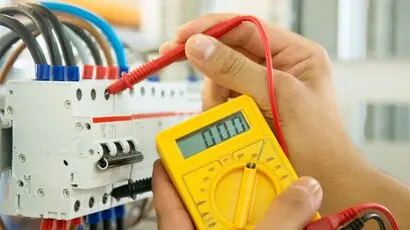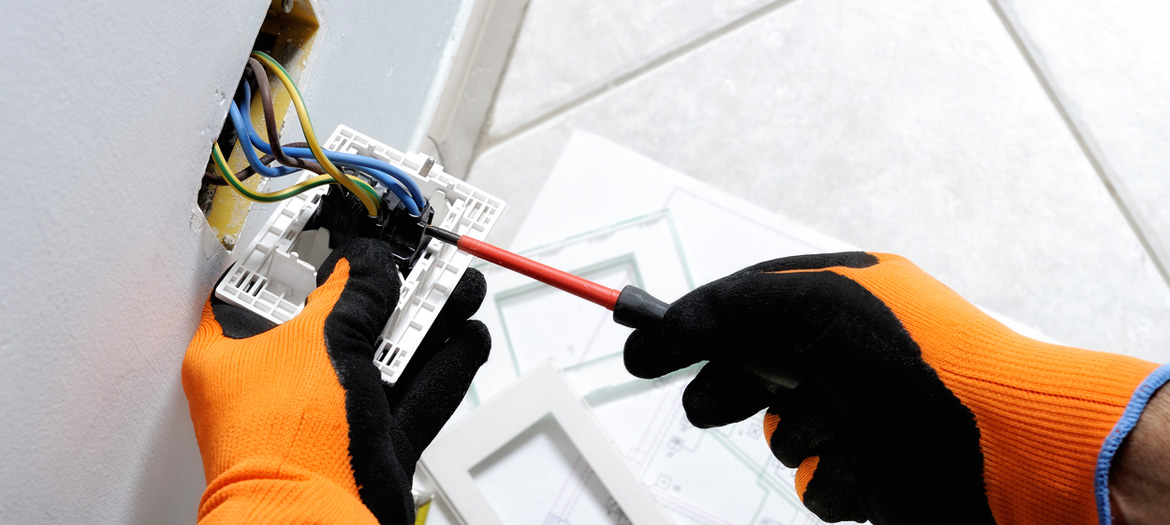Common Electrical Problems Every Homeowner Must Learn about
House owners typically encounter numerous electrical troubles that can affect safety and security and performance. Problems like flickering lights and tripped circuit breakers are a lot more usual than lots of understand. These scenarios can indicate much deeper electric issues that warrant focus. Understanding the indicators and dangers connected with obsolete circuitry and dead outlets is crucial. What measures can be required to stop these troubles? Exploring these typical electric concerns can disclose vital understandings for keeping a risk-free home atmosphere.

Flickering Lights: Reasons and Solutions
Why do some home owners experience flickering lights? Flickering lights can be an usual inconvenience, usually showing underlying electrical concerns. One key cause is loosened or malfunctioning connections within light components or circuitry, which can bring about intermittent power supply. In addition, using high-wattage home appliances on the very same circuit might cause voltage fluctuations, resulting in flickering or dimming. Another possible concern is an overloaded circuit, where way too many gadgets attract power simultaneously, straining the electrical system. Degraded or outdated wiring can contribute to inconsistent electric circulation. In some instances, flickering lights may signify a trouble with the home's electrical panel or service line. Property owners need to attend to flickering lights quickly to prevent prospective risks. Solutions may include tightening links, redistributing device tons, or speaking with a qualified electrician for a thorough assessment. Determining the origin can aid guarantee a risk-free and secure electrical system in the home.
Tripped Circuit Breakers: What You Required to Know
Have home owners ever before wondered what causes their circuit breakers to trip suddenly? This typical problem usually develops from an overload of electric circuits, where a lot of devices draw power simultaneously. In such instances, the circuit breaker acts as a security system, interrupting the flow of electrical power to avoid getting too hot and possible hazards. An additional frequent reason is a brief circuit, which takes place when a live cable calls a neutral cable, creating a rise of power that journeys the breaker. Ground mistakes can additionally lead to stumbled breakers; these take place when an online cord touches the ground or a based surface area, posing severe safety and security threats. Homeowners ought to regularly assess their usage of high-wattage appliances to stay clear of overloading circuits. Furthermore, recognizing the function of circuit breakers can assist them respond appropriately during a trip, guaranteeing their home stays well-maintained and safe.
Out-of-date Circuitry: Risks and indicators
Obsolete wiring can present substantial dangers to home owners, often going unnoticed up until troubles occur. Residences built before the 1980s might still have light weight aluminum circuitry or knob-and-tube systems, which are no more taken into consideration secure. Signs of obsolete wiring consist of flickering lights, regularly stumbled circuit breakers, or melting scents near outlets. These signs may suggest that the electric system is overloaded or deteriorating.Additionally, house owners could see blister marks around switches or electrical outlets, which can suggest getting too hot. The threat of electric fires considerably boosts with obsolete circuitry, as these systems were not created to manage modern-day electrical lots. Property owners are encouraged to have their circuitry checked on a regular basis, particularly when refurbishing or adding new appliances. By recognizing these indicators early, they can prevent harmful scenarios and keep a safer living setting. Updating to present electrical criteria is a proactive action in maintaining home safety and security and effectiveness.
Frequently Blown Fuses: Repairing Tips
Constant blown fuses can indicate underlying electric issues that might come from obsolete circuitry or overloaded circuits. Home owners experiencing this issue should initially recognize the appliances attached to the affected circuit. It is a good idea to stay clear of making use of multiple high-wattage tools at the same time, as this can result in circuit overload. If the problem continues, inspecting the fuse box for indicators of wear or damage is critical; a damaged circuit box might need replacement.Additionally, looking for loose links within the circuit can aid prevent future occurrences. Home owners need to likewise confirm that the integrates being used are of the right amperage, as making use of an inaccurate fuse can exacerbate the trouble. If these repairing tips do not fix the problem, seeking advice from an accredited electrical expert is recommended to examine the electrical system additionally. Dealing with these issues immediately can help alleviate risks and guarantee the safety of the home's electrical infrastructure.
Dead Electrical Outlets: Usual Reasons and Solutions
When a home owner experiences a dead electrical outlet, it can usually give frustration and complication. Several typical causes may lead to this issue. One regular perpetrator is a tripped breaker, which can be easily reset. If any type of breakers are in the off position, property owners should examine their electrical panel to check. An additional possibility is a malfunctioning outlet itself, which might need replacement. Additionally, loosened electrical wiring connections within the outlet can interfere with power flow, making inspection essential.Sometimes, the trouble might originate from an overloaded circuit, specifically when several tools are linked. In such instances, redistributing the electric load can resolve the issue. House owners should additionally think about the age of their wiring; older systems might require updates to satisfy modern-day electrical needs. If these steps do not rectify the scenario, consulting a certified electrical expert is suggested to ensure safety and security and correct diagnosis.
Electrical Shocks: When to Be Worried
Just how can property owners determine whether an electrical shock warrants worry? Property owners should initially assess the intensity and context of the shock. A light fixed shock, often really felt when touching steel objects, is common and normally harmless. However, if the shock takes place while communicating with a plugged-in appliance or outlet, it might indicate a much more severe issue.The area and regularity of the shocks are vital. Repeated shocks from the very same source, particularly in damp areas like kitchen areas or bathrooms, can signify damaged electrical wiring or poor grounding. Home owners should additionally consider the experience of the shock; a jolt that creates pain or contraction is extra worrying than a simple tingle.If there's any type of unpredictability, it is advisable to seek advice from a certified electrical contractor. Overlooking prospective electric risks can cause major safety and security risks, consisting of fire or severe injury.
Overloaded Circuits: Prevention and Safety And Security Measures
Overloaded circuits pose considerable risks in domestic settings, usually causing electrical fires or equipment damages (ASP Level 2 Electrician). Homeowners should recognize the indications of an overloaded circuit, such as regularly tripped breakers or lowering lights. Implementing preventative security practices can help reduce these hazards and assure a much safer living environment
Acknowledging Overloaded Circuits
What signs show that a circuit may be strained? House owners need to be vigilant for a number of key signs. Regularly tripped breaker or blown fuses recommend too much tons on the circuit. Lowering or flickering lights, specifically when various other devices remain in use, can symbolize an inadequate power supply. Furthermore, outlets or buttons that really feel warm to the touch might suggest getting too hot, a prospective fire hazard. Uncommon buzzing audios from electrical outlets additionally call for interest, as they can signify electric issues. Lastly, if devices operate inefficiently or fall short to start, it may be a sign of an overloaded circuit. Identifying these indicators early can help stop significant electric problems and promote a much safer home environment.
Preventive Safety Practices
To keep a reliable and risk-free electric system, property owners need to implement preventive safety methods that resolve possible circuit overloads. One reliable procedure is to avoid linking too many devices to a single electrical outlet, as this can go beyond the circuit's capability. click over here now Utilizing power strips with integrated breaker can aid disperse power safely. Home owners should also consistently examine cords and home appliances for damage and replace any kind of damaged equipment promptly. It is critical to ensure that circuit breakers are working appropriately and to be knowledgeable about the overall power level being utilized in each circuit. Furthermore, speaking with a qualified electrical expert for periodic inspections can recognize prospective issues prior to they intensify, assuring a much safer living atmosphere and extending the life-span of electrical systems.
Frequently Asked Inquiries
Exactly how Typically Should I Have My Electric System Inspected?
Regular evaluations of electric systems are recommended every three to 5 years. House owners need to take into consideration much more frequent checks if they experience concerns, undertake restorations, or live in older residential or commercial properties to ensure safety and conformity.
Can I Fix Electrical Troubles Myself or Hire an Expert?

What Are the Indicators of an Electrical Fire Risk?
Indicators of an electric fire risk consist of frequently stumbled circuit breakers, flickering lights, shedding smells, discolored outlets, or cozy, humming cords. Property owners need to stay watchful and look for expert assistance if any of these indications exist.
Just how Do I Know if My Home Demands an Electrical Upgrade?
To establish if a home requires an electric upgrade, signs consist of constant breaker journeys, obsolete circuitry, not enough electrical outlets, flickering lights, and the existence of older electric panels, suggesting prospective safety threats and ineffectiveness.
Are There Particular Security Tips for DIY Electrical Work?
When thinking about do it yourself electric job, one need to always shut off power, use insulated tools, verify circuit performance, adhere to neighborhood codes, and consult professionals for intricate tasks to guarantee security and avoid accidents. An additional possible problem is an overloaded circuit, where also lots of gadgets draw power at the same time, stressing the electric system. The danger of electrical fires noticeably boosts with outdated circuitry, as these systems were not developed to manage modern-day electric tons. Frequent blown fuses can show underlying electric problems that might stem from out-of-date wiring or overloaded circuits. To over at this website preserve a effective and risk-free electric system, home owners need to carry out precautionary security practices that address possible circuit overloads. Accredited Service Provider Level 2 Electrician. Indications of an electric fire risk consist of regularly stumbled circuit breakers, flickering lights, burning odors, blemished electrical outlets, or warm, humming cords